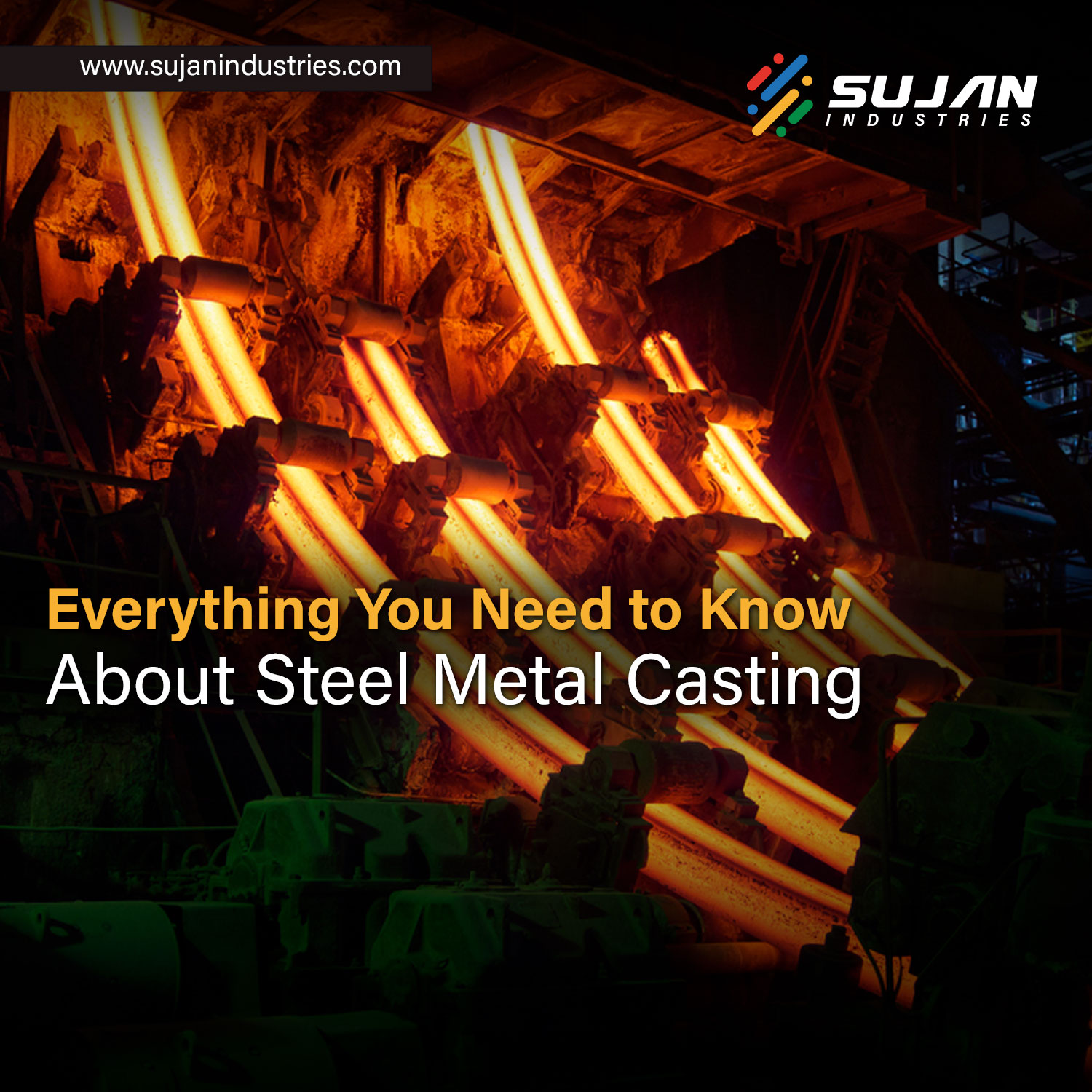
From the car you drive to the bridge you cross, steel is everywhere. But have you ever wondered how these things come into this shape? Or what kind of process is used to create these everyday objects?
The answer to these questions is steel metal casting.
The molten steel, glowing and fluid, is meticulously poured into a carefully designed mould. As it cools, it solidifies into shapes that are integral to countless structures and products we often see in our everyday lives.
Metal casting has stood as a foundational pillar in the world of industrial production. From automobiles and machinery to infrastructure and appliances, steel casting plays a crucial role in manufacturing durable and reliable products.
Its versatility allows for creating complex designs and intricate details, making it a preferred choice for industries that prioritize strength and precision. With technological advancements, steel casting continues to evolve, ensuring it remains an essential process in modern manufacturing.
Let’s delve into the intricacies of steel metal casting and discover why it holds such significance.
Steel metal casting is a key technique in industrial manufacturing that is critical in the production of a wide range of goods. The procedure entails heating steel until it becomes molten, then pouring this liquid metal into a specially prepared mould. Once within the mould, the steel cools and solidifies, taking on the form of the inside of the mould. For casting, there are various methods that are used, such as sand casting. It is one of the old and traditional methods of casting. It remains a popular choice for many applications due to its cost-effectiveness and adaptability to complex shapes and sizes.
With the help of these various techniques, Precision is assured in the creation of components for machines, tools, and a variety of other applications. Steel metal casting’s dependability and adaptability have made it an important technique in sectors ranging from automotive to construction, highlighting its fundamental position in modern manufacturing.
Various methods are employed in metal casting to craft intricate, complex shapes tailored and made according to the client’s choices and preferences. Most of the methods are used because of their affordability and durability.
Steel metal casting in industrial applications is not merely a question of history but also of practicality and efficiency. Steel, which is recognised for its strength and durability, guarantees metal casting components may bear considerable loads and have longer lifespans.
This casting method is unrivalled in its adaptability, enabling the fabrication of components in nearly any shape or size, catering to bespoke requirements across industries.
Furthermore, the accuracy of steel casting lowers the need for post-production adjustments, resulting in cost and time savings. Steel metal casting, in essence, delivers a harmonic balance of strength, flexibility, and economic efficiency, making it an ideal option for producers globally.
The steel metal casting process has seen major developments throughout the years, developing to suit the changing needs of industries. Computer-aided design (CAD) and simulation tools have been provided by modern technology, allowing for more exact and sophisticated mould designs. This makes castings more precise and consistent, reducing mistakes and waste.
Furthermore, advances in metallurgy have created new steel alloys with improved qualities, expanding the range of applications for steel-cast components. Automation and robots are now being used in the casting process to improve safety, efficiency, and reproducibility.
These progressive strides in metal casting are proof of the industry’s commitment to innovation, continually pushing boundaries to offer solutions for modern manufacturing challenges.
While steel casting is an essential component of many production processes, it also brings its own set of problems that specialists must overcome. Temperature regulation is one of the most pressing challenges. It is critical to ensure that the steel is continually heated to the right temperature; even tiny variations might lead to flaws or damage the final product’s strength. Another issue is metal shrinking as it cools, which may occasionally result in cavities or structural flaws. Then there’s the matter of impurities in the molten steel; contaminants may have a negative impact on the cast’s quality and durability.
Furthermore, controlling the environmental effect, particularly in terms of emissions and trash, is an ongoing challenge. Addressing these problems while optimising the efficiency and quality of steel casting remains a high concern as industries grow.
As industries grow and evolve, the demand for steel parts of varying complexity also increases. Thankfully, with the continuous advancements in technology and techniques, steel casting is more equipped than ever to meet these demands. One of the key advancements in steel casting is the use of computer-aided design (CAD) software, which allows for precise and intricate designs to be created.
This technology is beneficial for manufacturers, including defence parts manufacturers in India, as it enables them to produce steel parts with complex shapes and intricate details, aligning with the evolving needs of various industries. Moreover, the development of advanced metallurgical processes has further improved the strength and durability of steel castings, making them suitable for even the most demanding applications in India and beyond.
Steel metal casting, with its combination of age-old principles and cutting-edge developments, is nevertheless an important part of today’s industrial scene. Understanding this process provides insight into the backbone of many structures and technologies we frequently take for granted, for those in the industry or simply the interested reader.
At Sujan Industries, we deliver top-quality steel and sand casting solutions that are not only cost-effective but also of the utmost excellence. Our highly skilled experts guarantee that each product adheres to rigorous industry benchmarks. For such top-quality services, visit our website today.